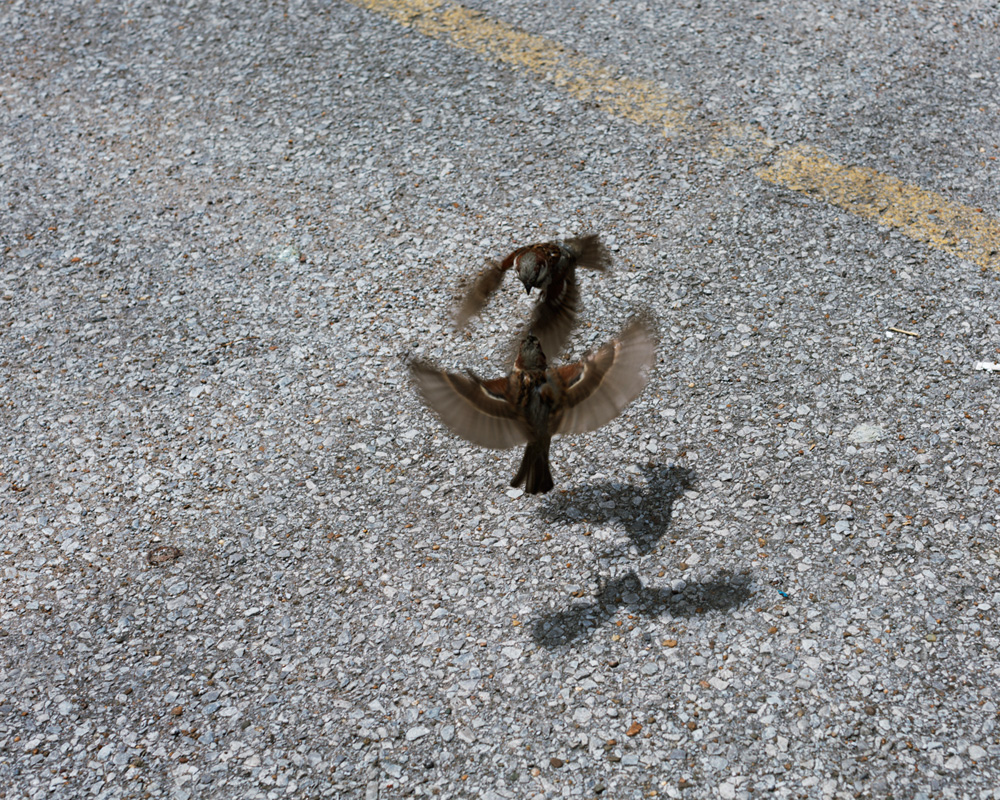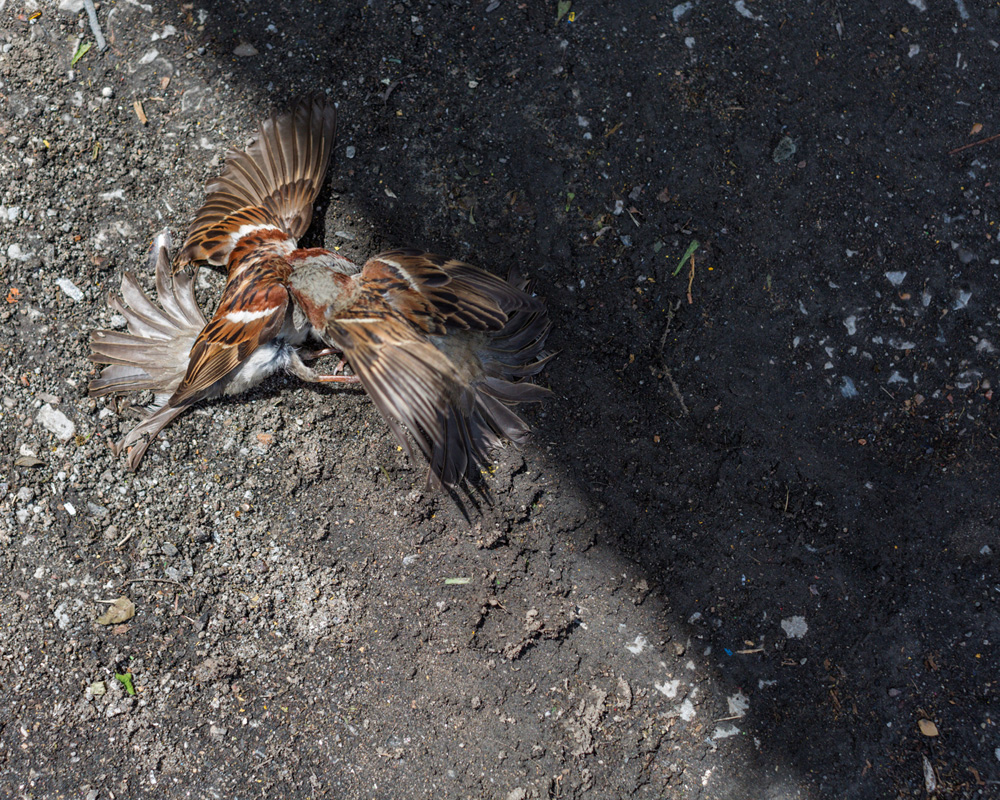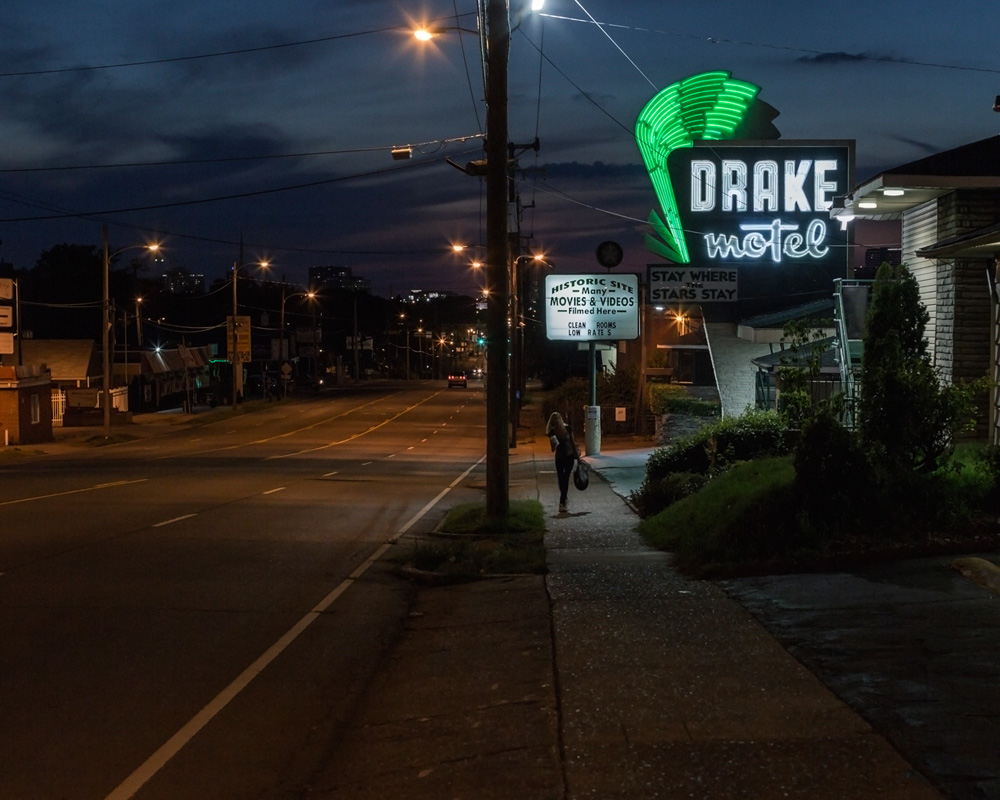





















PROJECT LAUNCH: Artist's Statement
Winner: Tamara Reynolds
The Drake
One Square Block: The Unseen Seen
The Drake Motel is located in an area ignored by developers, a microcosm of the disregarded or resentfully tolerated. Alcohol and drug addiction are prevalent among the residents. Prostitution, panhandling and day labor have become ways to support addiction. These are lives too often overlooked, and I choose to examine them closely.
The Drake offers a means to delve deeply into a world both far removed from my own but also perilously close –– how my life might have looked had I not found the resources that led me to recovery. The work continuously challenges my concept of empathy and how to photograph my subjects in such a way as to “make the unseen seen.”1 I am fierce in my intent to push back against a society of increasing culturally endorsed behavior to not acknowledge the marginalized. These are not easy pictures, but my hope is that the images give space for viewers to move closer, to enter the stillness of the photographs and consider the lives of those looking back.
Linfield, Susie, The Cruel Radiance: Photograph and Political Violence, (Chicago Press, 2010), p. 258

PROJECT LAUNCH: Artist's Statement
Honorable Mention: Jess T. Dugan
To Survive on This Shore: Photographs and Interviews with Transgender and Gender Nonconforming Older Adults
Representations of older transgender people are nearly absent from our culture and those that do exist are often one-dimensional. For over five years, photographer Jess T. Dugan, in collaboration with social worker Vanessa Fabbre, traveled throughout the United States creating "To Survive on This Shore: Photographs and Interviews with Transgender and Gender Nonconforming Older Adults." Seeking subjects whose lived experiences exist within the complex intersections of gender identity, age, race, ethnicity, sexuality, socioeconomic class, and geographic location, they traveled from coast to coast, to big cities and small towns, documenting the life stories of this important but largely underrepresented group of older adults. The featured individuals share a wide variety of life narratives spanning the last ninety years, offering an important historical record of transgender experience and activism in the United States. The resulting portraits and narratives offer a nuanced view into the struggles and joys of growing older as a transgender person and offer a poignant reflection on what it means to live authentically despite seemingly insurmountable odds.

PROJECT LAUNCH: Artist's Statement
Honorable Mention: Mike Williams
Eschaton
The Protestant theologian Charles Harold Dodd coined the term ‘eschaton’ in 1935 to describe the end of the world as a “divinely ordained climax of history.” The end has defined us from the beginning. (I am the Alpha and the Omega, the first and the last, the beginning and the end.) Strategically, the plutocratic end times of a mock republic are saturated in eschatology, one that twists war, natural disaster, man-made catastrophe, pestilence and poverty into welcome equalizers. The pallor of a new gilded age, envisioned in our darkest instincts, forces an anomalous concoction of hallucinatory revelation – a land of paradox, where pictures will do.
These photographs are from a longer sequence of images made traveling across the United States. They are a surreal investigation of social and political anxiety. I'm interested in the intersection of photography and language and see my work as a kind of experimental fiction or image fiction. Photographs are dangerous. Lens based imagery is at its core a paradox. The scientific exactitude of photographic realism is inevitably transformative. An uncanny group of pictures is like an alternate universe best taken sitting down. Embracing the artifice is my only advice.

PROJECT LAUNCH: Juror's Statement
Sarah Hermanson Meister
Curator, Department of Photography, The Museum of Modern Art
Photography is—simultaneously and paradoxically—one of the easiest and most difficult means of artistic expression. And the distinction between those projects that offer original insight and enduring value and those that simply reveal an unknown corner of our common physical or emotional landscape can be both subtle and, admittedly, subjective. I was certainly curious to encounter aspects of the world that had been previously invisible to me, and touched to see photographs that poignantly captured the vulnerability of the artist and/or subject, yet the strongest portfolios managed to weave into their compelling images a sense of urgency, so that what might have begun as a private inquiry could assume broader significance in our current moment. This is an exceedingly difficult thing to do, and I am in awe whenever I encounter a body of work that seems to open up new paths towards understanding the world around us.

